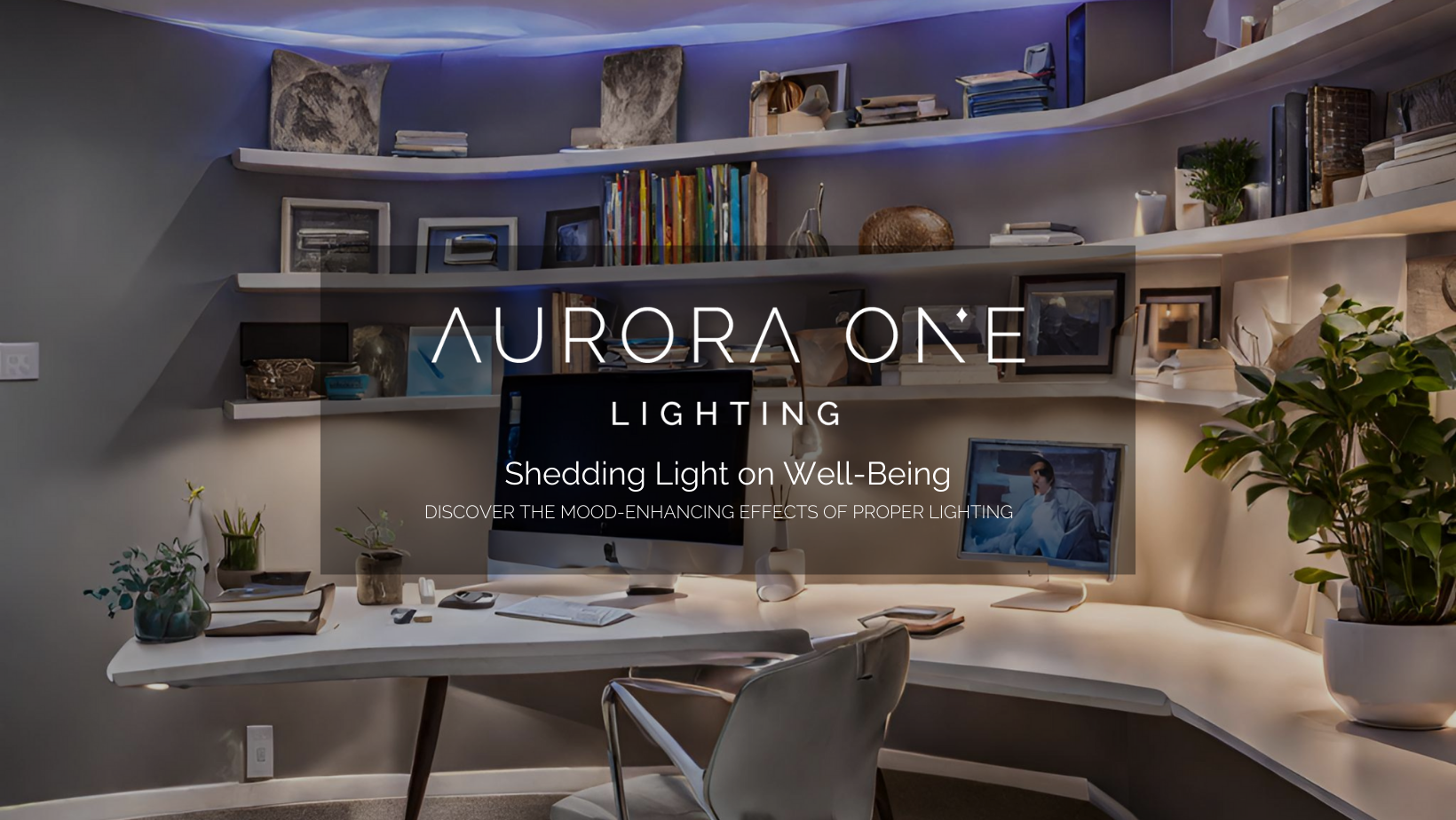Discover the Mood-Enhancing Effects of Proper Lighting
Walking into a room that is well-lit can instantly make you feel happy and calm. Proper lighting not only illuminates spaces, but also has a profound impact on our mental well-being. In this blog, we will explore how lighting can enhance our mood and why it is crucial for our overall happiness.
The importance of lighting in our daily lives
Lighting plays a significant role in our daily lives, whether we realize it or not. It has the power to influence our mood, energy levels, and overall well-being. Natural light, in particular, has been proven to have numerous benefits for our mental health. Exposure to sunlight triggers the release of serotonin, a hormone that boosts mood and promotes feelings of happiness. On the other hand, insufficient exposure to natural light can lead to mood disorders such as seasonal affective disorder (SAD). This condition is characterized by feelings of depression and lethargy, especially during the winter months when daylight hours are shorter.

The importance of lighting in our daily lives
Lighting plays a significant role in our daily lives, whether we realize it or not. It has the power to influence our mood, energy levels, and overall well-being. Natural light, in particular, has been proven to have numerous benefits for our mental health. Exposure to sunlight triggers the release of serotonin, a hormone that boosts mood and promotes feelings of happiness. On the other hand, insufficient exposure to natural light can lead to mood disorders such as seasonal affective disorder (SAD). This condition is characterized by feelings of depression and lethargy, especially during the winter months when daylight hours are shorter.
How lighting affects our mood and well-being
The lighting we surround ourselves with can significantly impact our mood and overall well-being. Different types of lighting can evoke unique emotions and create various atmospheres. For instance, warm, soft lighting can produce a cozy and relaxing ambiance, perfect for winding down after a long day. On the other hand, bright, natural light can increase focus and alertness, making it an ideal choice for work or study areas. Additionally, the color temperature of light also influences our emotions. Cool white light mimics daylight and can help us feel more awake and energized, while warm yellow light creates a soothing and comforting environment. By understanding the effects of lighting on our mood, we can create spaces that foster positivity and well-being.
The science behind lighting and its impact on our brain
The science of circadian rhythms explains how lighting affects our brain. Our body has an internal clock that regulates our sleep, hormone production, and other functions. This clock is influenced by external factors, such as light. Exposure to natural light during the day helps synchronize our internal clock, promoting a healthy sleep-wake cycle and overall well-being. However, exposure to artificial light, especially blue light emitted by electronic devices, can disrupt our circadian rhythms and negatively affect our sleep quality. Understanding the science of lighting can help us make informed decisions about the type and timing of light exposure, which can ultimately improve our mental health and well-being.
Various types of lighting can be used to create different moods and atmospheres. Knowing about these types can help us choose the proper lighting for our specific needs.
1. Natural Light: Natural light, or daylight, is the most beneficial lighting for our well-being. It provides essential Vitamin D to helps regulate our internal clock and improve our mood.
2. Incandescent Lighting: Incandescent bulbs emit warm, yellow light that creates a cozy and inviting atmosphere. These bulbs create a relaxing ambiance in living rooms and bedrooms.
3. Fluorescent Lighting: Fluorescent bulbs are energy-efficient but sometimes emit harsh, cool light. However, newer fluorescent bulbs with improved color rendering can provide a more natural and comfortable lighting experience.
4. LED Lighting: LED bulbs have gained popularity due to their energy efficiency and versatility. They are available in a wide range of color temperatures, allowing users to create different moods and atmospheres.
Here are some tips to help you create a well-lit and mood-enhancing environment at home that promotes happiness and well-being:
1. Maximize Natural Light: Allow natural light to flood your living spaces whenever possible. Open curtains and blinds during the day to let sunlight in. If privacy is a concern, consider using sheer curtains or light-filtering blinds.
2. Layer Lighting: Instead of relying on a single overhead light source, use a combination of ambient, task, and accent lighting. This will create depth and dimension in your space, enhancing its overall appeal.
3. Choose the Right Bulbs: Opt for bulbs with warm color temperatures for relaxing areas and cool color temperatures for areas where focus and productivity are essential. Consider using dimmers to adjust the intensity of light as needed.
4. Use Lighting Controls: Install lighting controls, such as timers and motion sensors, to automate your lighting system. This will save energy and ensure you have the proper lighting at the right time.
5. Consider Lighting Placement: Pay attention to the placement of lighting fixtures to avoid glare and shadows. Aim for even, diffused lighting that illuminates the entire space without causing discomfort.
The role of lighting in workplace productivity and employee well-being
Lighting is a crucial aspect of both our homes and workplaces. It has a significant impact on employee productivity, mood, and overall well-being. Studies have shown that well-lit workspaces can improve focus, reduce eye strain, and enhance overall performance. Natural light in the workplace has also been linked to increased job satisfaction and reduced absenteeism. Employers should prioritize providing well-lit work environments that cater to the specific needs of their employees. This can be achieved through a combination of natural light, appropriate artificial lighting, and well-designed lighting systems. By investing in proper lighting, employers can create a positive and productive work environment that benefits both the employees and the company.



